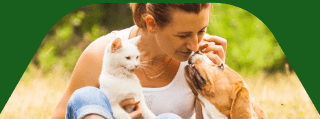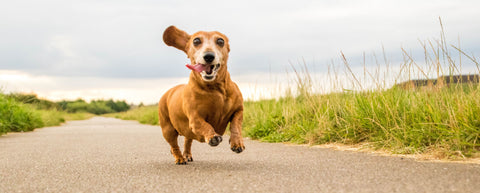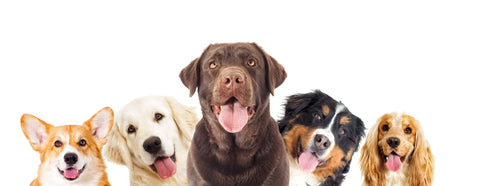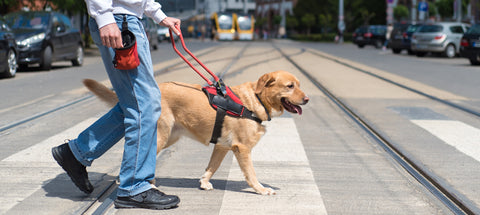
I enjoy hanging out with my dog and other trainers participating in competitions, training classes, or getting together for a hike with our dogs. And every time I teach my dogs a new trick, I feel so satisfied seeing how our relationships are growing along with our level of communication.

How to get started
So where do you start to research dog sports or how to train your dog in them?
Most people get involved in dog sports after they already have a dog, but I have known some owners that choose their dog because they’re interested in a specific sport. You may want to research which breeds, whether mixed-breed or purebred, are more suitable for sports or a particular event. But don’t worry, there’s a sport for every dog!
There are many sports for dogs of all ages too. Youngsters can do tricks, tracking, and learn the foundation skills for more complex sports. Senior dogs can do activities more appropriate for their age and physical ability, such as tricks and novice obedience, which do not require jumping.
Scent work involves training your dog to find and discern between different smells. Any dog can participate in this sport no matter their age as dogs maintain their sense of smell into old age! Scent work is growing in leaps and bounds in the sporting community, and there are many classes available to you!
Learn more about how YuMOVE Joint & Hip Supplements support your active dog in sports here.
Another great way to find out more information is by looking into dog-focused organizations, like the American Kennel Club (AKC). The AKC is a highly regarded registry for purebred dogs and is very involved with canine athletics. Despite being a purebred dog registry, they provide many opportunities for dogs without ‘pedigree papers’ to get involved in dog sports! You can even train at home and receive ‘virtual titles’ by sending videos of your dogs to virtual events.
What activities can you do with your dog?
The wonderful thing about canine athletics is that there is something for every dog! There’s agility (my sport), dock jump, herding, flyball, and many more sports to try.
As we mentioned, you should consider your dog’s breed and what they may excel at, as this can point you in the right direction. For example, Labradors are ideal for field work or dog shows, as they can learn commands easily and were bred for hunting. Additionally, a small terrier-like dog may embrace sports like barn hunting or scent work.
To have fun with your dog in a sport, you should choose one you’ll both enjoy. Higher activity levels in your dog may point you towards the more athletic and energetic sports, for example, agility, dock diving, flyball, or lure coursing.
What about your fitness? Do you jog for miles with your dog or take an occasional walk around the block? Your desired activity level should affect your sports choice, but you can choose an active sport for your dog to increase your fitness level.

Where can you learn more?
Once you know what sports you and your pup are interested in, you should watch a competition and a few training sessions in person. An agility trial out on an open field will look different compared to an indoor beginner-level agility class. You can also volunteer at events or trials to help you learn more about the sport from the inside.
After seeing what the pros look like, you should visit some local training classes. Most instructors will allow you to watch a class (without your dog). You’ll see how the instructor engages with their students and if the training looks fun but not corrective at all.
You can always politely ask about the instructor’s experience level or credentials but try to be open-minded until you learn more about the sport. A less experienced instructor with wonderful camaraderie with students and their dogs may be a great fit for you and your dog as beginners.
Private training or group classes?
Many instructors teach both private and group classes. It’s always a good idea to ask about all the training they offer, including beginner-level in-person or virtual classes.
Training is often watching a new video each week and recreating the lessons on your own at home. Check with local leaders in your chosen sport for ideas about online training. They are often the best resources.
You can also research for local clubs that teach your sport or host trials. I live in the San Francisco Bay area, and we have a local agility club named The Bay Team. There are a lot of online resources and joining a club will allow you to learn about all the events in your area. Get Googling!

Is your dog ready?
While you may be eager to go, you should ensure your dog is ready to start canine athletics training. Does your dog walk nicely on a leash? Do they like riding in the car? Does your dog like being around other dogs?
Some classes won’t require extensive ‘pre-training’ before you attend, but (for some sports) your dog will need some basic obedience skills. In agility, the dogs often start ‘foundation’ training as young as five or six months old to teach your youngster all the skills they’ll eventually need. These skills usually include:
- Sit
- Down
- Stay
- Heel
- Great recall
- Tugging
- Retrieving toys
These social skills and tricks eventually lead to your dog performing an obstacle course that they learn one obstacle at a time.
Another aspect to consider is your dog’s fitness. While certain breeds have more athletic abilities than others, if you maintain a good fitness level and show no signs of injury, they can participate in canine athletics.

Socialization is key
Your dog should also be comfortable and well-mannered around other dogs, as they will be with lots of dogs for training and competing. If you have a social and easy-going dog, you’ll find it easier to start.
Socialization is important for all dogs, not just canine athletes, as it helps them learn to respect other dogs and cues for when other dogs are happy, annoyed, or uninterested, for example. A well-mannered dog stays engaged with you until you say so, doesn’t jump on people and other dogs unless invited to, isn’t aggressive or fearful, and is potty-trained.
The final step, get out there and find a sport that interests both you and your dog! Start enjoying the next stage of your dog’s healthy active life, for life!
Get to know Nancy Gyes
Nancy’s dog training career began over 30 years ago, teaching obedience classes for puppies and adult dogs. She has earned many titles with her dogs and won multiple National Agility Championships, in addition to attending the European Open and World Championships. She is currently the coach of the American Kennel Club’s USA Agility World Team while also running her own agility training business in San Jose, California with her husband. It has been her honor to be named an American Ambassador for YuMOVE, a product she heartily endorses and gives to her own dogs!
Are you interested in canine athletics? Share your training and competition photos with us on our Instagram and Facebook pages! Don't forget to follow and tag us.
Recommended Product
If your dog is high energy or active, YuMOVE PLUS Joint Supplement for active dogs is best for your pup. From 6 months old to their senior years, YuMOVE PLUS will help strengthen and protect their joints.












